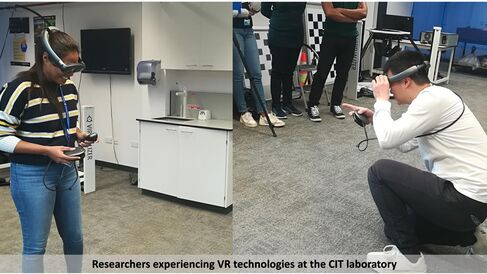About CIT

Overview
The Construction Information Technology (CIT) laboratory at the University of Cambridge is committed to providing high-quality leadership on research, education and technology transfer to address issues related to infrastructure sensing (from the construction phase and beyond), data analysis, and knowledge generation. CIT works with international, national, and local public and private agencies to solve research problems of great significance, and create feasible and sustainable methods that gradually advance the body of knowledge in construction IT, while always looking for the next leap. The goals of CIT are to:
- Create, synthesize, modify and/or adapt the next generation IT methods and systems needed to automate and improve construction, inspection and rehabilitiation methods
- Educate a new generation of students who will be well versed in the art of multidisciplinary thinking and problem solving, and can collaborate effectively in teams to tackle problems in the border of signal, image, and video processing, computer vision, and construction engineering
- Provide continuing education opportunities to keep practitioners at the cutting edge of IT methodologies and technologies with construction applications
- Provide technology transfer resources to disseminate knowledge
Vision
How do we build better infrastructure and maintain it more efficiently? According to a recent report on the Grand Challenges of Engineering, the US National Academy of Engineering (NAE) believes that dramatic progress may be possible only by developing entirely new inspection, construction and rehabilitiation methods. Most of the basic methods have been around for centuries — even millennia. Besides, the limited availability of funding influences the public and private sectors' abilities to expand and properly maintain the built environment. Advances in computer science and robotics should make more automation possible in construction, greatly speeding up construction, inspection, and rehabilitation times and lowering costs. As a result, creating, adopting, and modifying those advances to fit the needs of constructors and maintainers is a major challenge in construction IT research. These issues focus our attention on the important role of CIT; bridging the gap between traditional research domains to devise methods for mapping, labeling, and assessing infrastructure, both to assist in building it and to help repair it.
Strategic Objectives
The CIT’s strategic objectives aim to solve complex engineering problems and automate laborious inspection, control, and monitoring tasks through decision support tools that recognize data patterns, retrieve useful information, and generate knowledge of the built environment. They include the following:
- Conduct multi-disciplinary research on topics relating to the relationships among construction engineering, image processing, and computer vision
- Disseminate research results and other products of CIT to the construction IT community
- Provide construction education and professional development on topics relating to information technology and its applications to construction, inspection, and rehabilitation
- Establish a central point of contact (through this web site and affiliated collaborators) for materials related to construction IT
- Promote diversity in the workforce through active recruitment of women and minority students into degree programs
- Act as a national resource for the debates and discussions that focus on the evolving national construction IT community
The CIT laboratory is planning to establish a strong relationship with the Engineering and Physical Sciences Research Council (EPSRC) and European Commission as the potential sources for financial support for the CIT activities. Other matching support comes from University of Cambridge and other sponsors. CIT is also seeking partnerships with organizations, agencies, and research groups that are concerned with fundamental research in construction data sensing, analysis and mining.
